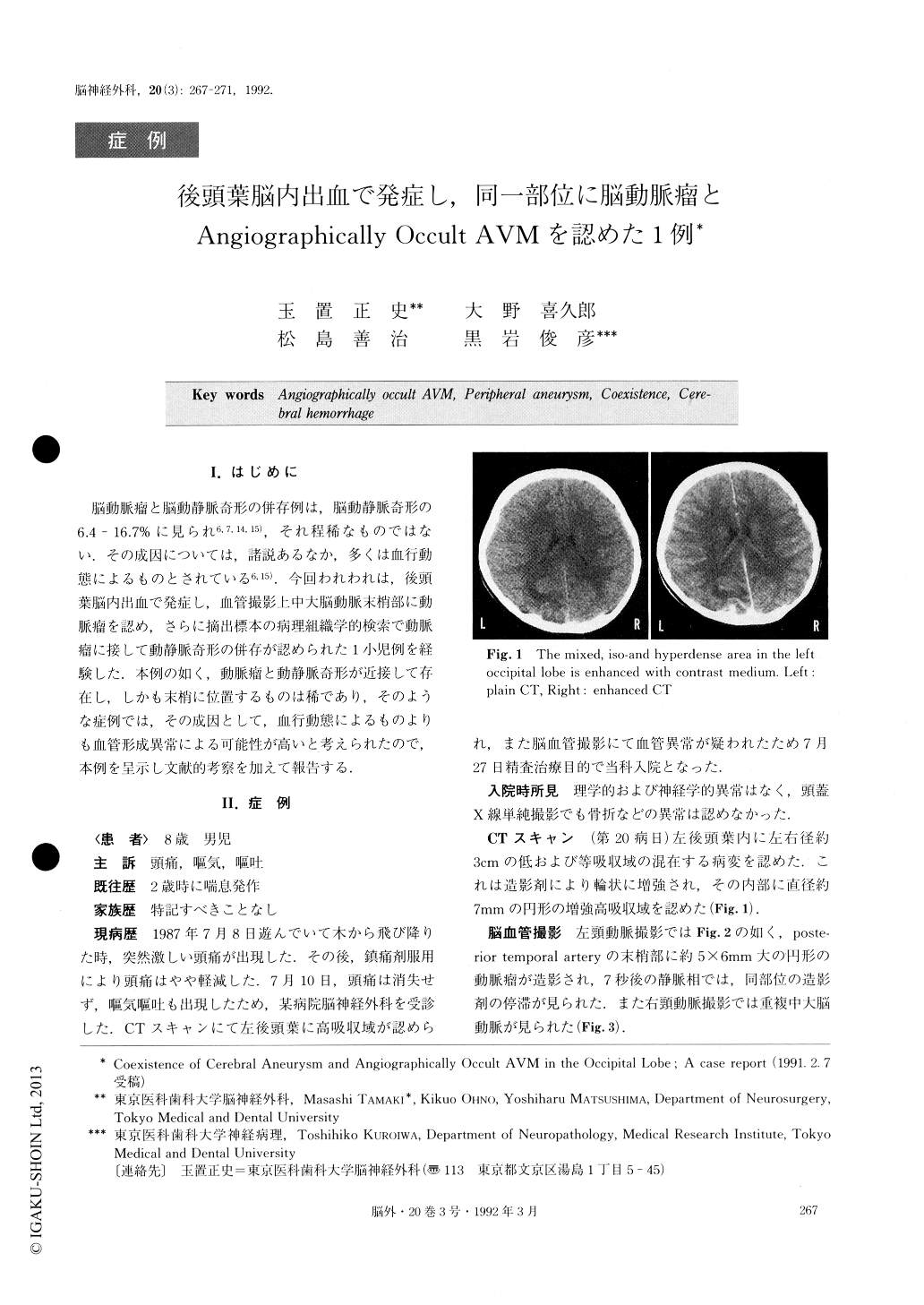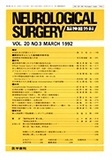Japanese
English
- 有料閲覧
- Abstract 文献概要
- 1ページ目 Look Inside
I.はじめに
脳動脈瘤と脳動静脈奇形の併存例は,脳動静脈奇形の6.4-16.7%に見られ6,7,14,15),それ程稀なものではない.その成因については,諸説あるなか,多くは血行動態によるものとされている6,15).今回われわれは,後頭葉脳内出血で発症し,血管撮影上中大脳動脈末梢部に動脈瘤を認め,さらに摘出標本の病理組織学的検索で動脈瘤に接して動静脈奇形の併存が認められた1小児例を経験した.本例の如く,動脈瘤と動静脈奇形が近接して存在し,しかも末梢に位置するものは稀であり,そのような症例では,その成因として,血行動態によるものよりも1血1管形成異常による可能性が高いと考えられたので,本例を呈示し文献的考察を加えて報告する。
The authors report a case of an 8-year-old boy with coexistent aneurysm and arteriovenous malformation (AVM) at the periphery of the left middle cerebral artery.
The patient was referred to our hospital because of intracerebral hematoma in the occipital lobe. Angiogra-phy revealed an aneurysm at the periphery of the left middle cerebral artery. A small AVM was found, adja-cent to the aneurysm, by histological examination of the aneurysm and surrounding tissue resected by surgery. The patient was discharged uneventfully 17 days after surgery.
The association of intracranial aneurysm with AVM is reported to be seen in 1.4% of patients with intracra-nial aneurysms, and 6.4% to 16.7% of patients with an intracranial AVM. Three hypotheses have been pro-posed in order to explain the association of an aneurysm with AVM: (1) Congenital multiple dis-orders of vascular development, (2) Hemodynamic stress resulting from the presence of an AVM, (3) Coincidence without any causal relationship between them. The coexistence of the two vascular lesions, adja-cent to each other at the peripheral cerebral arteries is rare. Only 7 cases have been reported in the literature. Four of the 8 cases including ours were children, and 6 of the 8 cases were thought to have had a hemorrhage from the AVM.
It is likely that the coexistence of the two lesions in our patient is of congenital origin, because the influence of hemodynamic stress from the AVM seemed little and coexistence of the lesions as found in our case is more frequently seen in childhood.

Copyright © 1992, Igaku-Shoin Ltd. All rights reserved.


